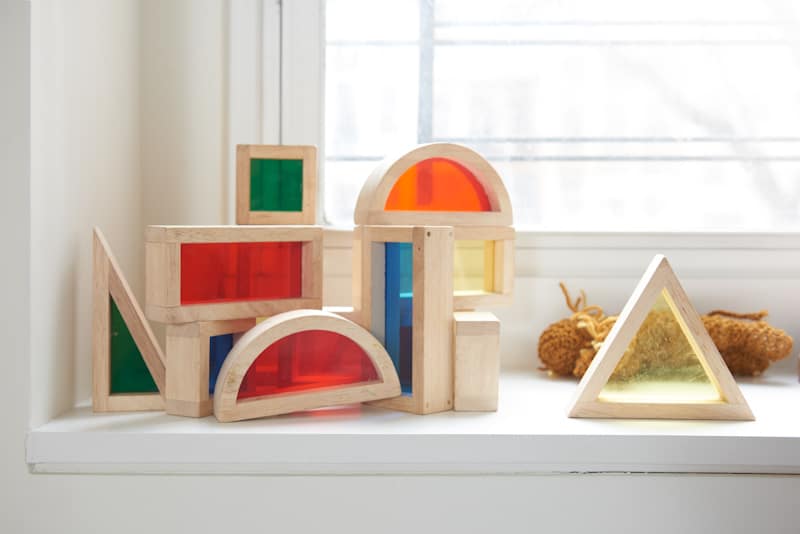
Waldorf Education: What It Is And How You Can Do It At Home
Written by Sara Langer
Photography by Araks Yeramyan's home, Photographed by Maria Del Rio
Deciding what path you choose for your child when it comes to their education is not an easy task. No two children are the same and there isn’t one educational school of thought or philosophy that is going to be the best for everyone. Education has been a hot political topic for many years and as the traditional public school systems continue to be scrutinized, many parents (who are financially able) are turning to private and charter schools in order to find alternative options for their children’s education.
Waldorf education, founded by Rudolf Steiner in Germany in the early 20th century, is an experiential and arts-based approach to learning. There are currently 1,000-plus Waldorf schools worldwide, with approximately 175 schools operating in the United States (a growing number of which are public or charter programs). In addition, there are many Waldorf-inspired early childhood and kindergarten programs, which range from in-home daycares to established preschools. In essence, Waldorf schools aim to educate the child holistically with a focus on imagination and creative play, artistic expression, critical reasoning, and a social, moral, and ethical understanding of their place in the world. The ultimate goal being a child with an intrinsic love of learning and following their desired path with a sense of freedom and responsibility. For those of you curious about this method and considering it for your child, we’ve outlined some of the key facts, principles, and characteristics of Waldorf education below.
–Respecting All Developmental Phases: Waldorf education views child development as three major stages. The early childhood years have an emphasis on hands-on creative and imaginative play. During the elementary years, there is a focus on artistic development as a means of both creative expression of the child and as a method to learn about and relate to the world around him/her. In the secondary years, critical reasoning is developed through more conscious cultivation of an observing, reflecting, and experimental scientific attitude to the world, focusing on building an understanding of what is true, based on personal experience, thinking, and judgment.
–Fostering Imagination: Myths, folk tales, fables, and legends are all a big part of the Waldorf curriculum. Through these teachings, children are able to learn about and experience diverse cultures. These stories can enrich the learning of children of all ages and aid in promoting free thinking and creativity.
–Using Natural Materials and Limiting Technology: Toys and materials in Waldorf classrooms are made from natural fibers, such as wood, silk, wool, and cotton. A kindergarten classroom will often look much more like a home environment than a traditional classroom setting. Use of technology is limited, especially in the early years. Use of computers is generally not introduced until high school. Families are also encouraged to limit technology use in the home. The belief is that technology can limit a child’s natural interactions with the real world around them and hinder their creativity and curiosity.
–Incorporating Movement and Art: Eurythmy, a unique part of Waldorf education, is the art of movement that attempts to make visible the tone and feeling of music and speech. Eurythmy lessons follow the themes of the curriculum, exploring rhyme, meter, story, and geometric forms. Waldorf schools are not considered “art schools,” but art is incorporated into all aspects of the curriculum. Students will learn to make things with their hands such as sewing, knitting, and sculpture with everything from beeswax to wood or stone. (To see a Waldorf family in action, check our our profile of designer Araks Yeramyan!)
–Utilizing One Teacher for Multiple Years: Once children have entered elementary school, they will stay with the same teacher and group of students for several years, generally through 6th or 8th grade, in what is often referred to as “looping.” The children are able to form a deep bond with the teacher who will have the time to truly get to know the child and observe their development over time.
–Eschewing Formal Testing and Assessments: Because most Waldorf schools are private, independent schools, they are not required to administer state-mandated standardized testing. They believe this type of assessment does not give an overall picture of the students’ growth and development. Other types of assessment and testing may differ from school to school, but a full assessment of each student’s progress is provided in the form of a year-end narrative assessment in all subject areas. These assessments are supported by teacher conferences and class meetings throughout the year.
–Bringing Waldorf into the Home: Providing the opportunity for imaginative play and plenty of time for free, outdoor exploration is key. Try and keep plastic toys out of the home and instead provide toys made of wood and natural materials, including eating utensils. Purchase art materials and materials that allow children to work with their hands, like beeswax, yarn and simple crayons in just a few colors. Having a consistent and rhythmic schedule is an important part of feeling comfortable and supportive for a young child, according to Waldorf philosophy.
–Comparing Waldorf and Montessori: These two educational philosophies are often compared to one another and even grouped together as similar approaches to education. While they do share some characteristics, they each have a very distinct pedagogy that differs from one another. Both schools of thought focus on educating the child in a holistic manner, through experiential learning and following the developmental needs of the child. They both emphasize the use of natural materials and limiting technology, as well as providing a rich opportunity for art, music, dance, and theater for all ages. There is great respect for the child as an individual, spiritual, and creative being. The most obvious differences between Waldorf and Montessori are in the early childhood methods and curriculum. Waldorf has a big focus on play and imagination, with little focus on academic subjects. Dolls and dress-up are often present in early childhood Waldorf environments. Montessori, on the other hand, fills its rooms with “real-life work,” such as opportunities to cook, clean, care-taking of the environment and others, and academic development using manipulative materials to learn principles of math, language, science, and geography. Waldorf students are grouped with children of the same age and the teacher will stay with the same students for many years. In Montessori, children are grouped in mixed-aged environments and stay with the same teacher for three years, from 3-6 years, 6-9 years old, and 9-12 years old. Waldorf believes that children thrive with a schedule of rhythm and predictability guided by the teacher, while Montessori believes that children do well in free and self-led environments, choosing their own activities when they want to, even though there is a general schedule and structure to the day. If you’re interested in the Montessori method, be sure to check out our guides to independence-building activities for toddlers, and for elementary-school students.
Share this story




